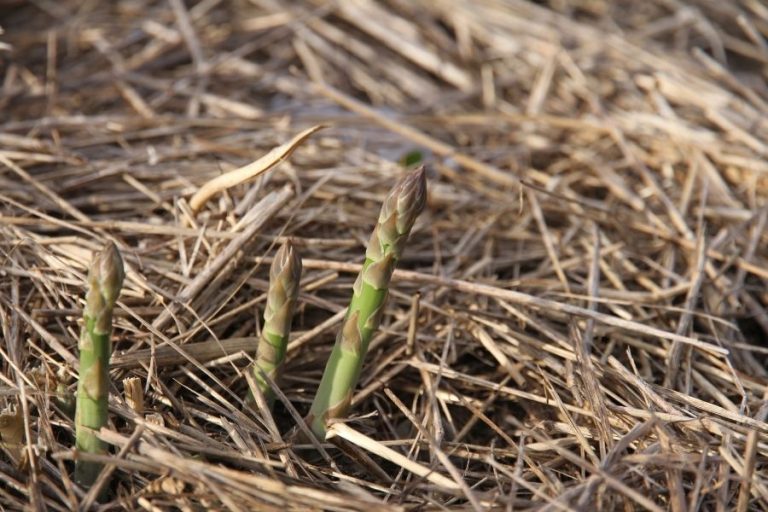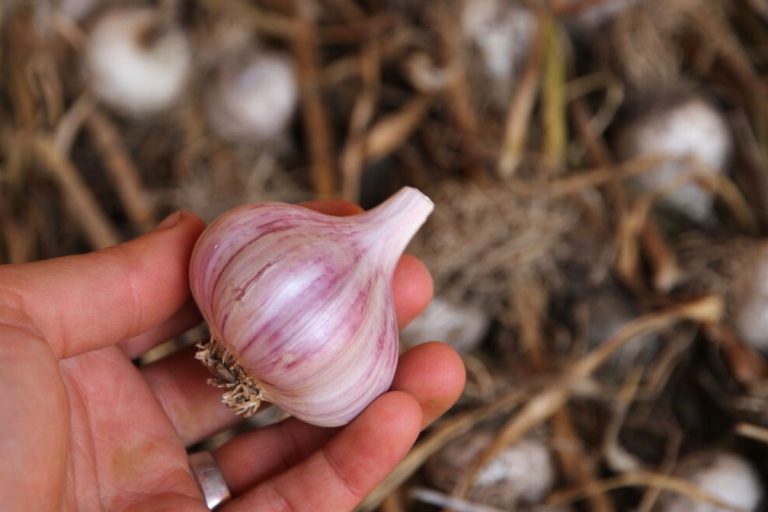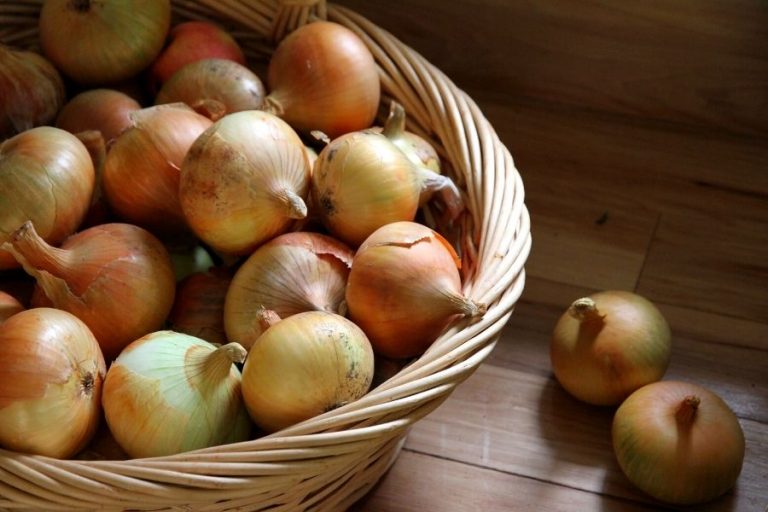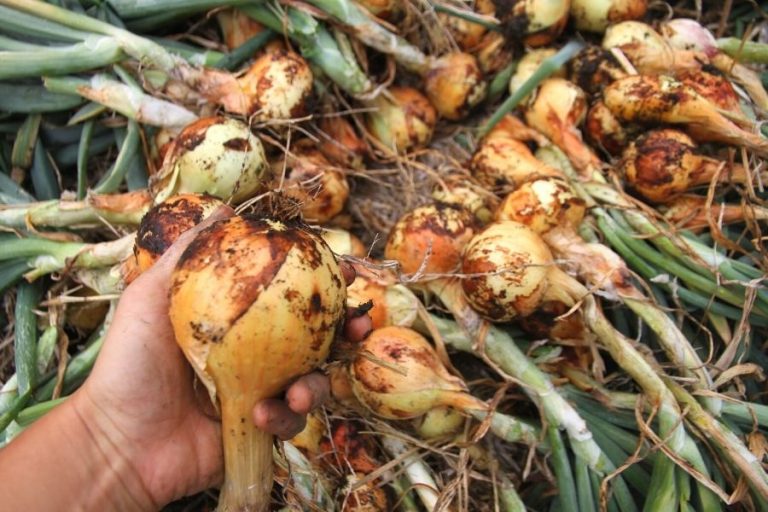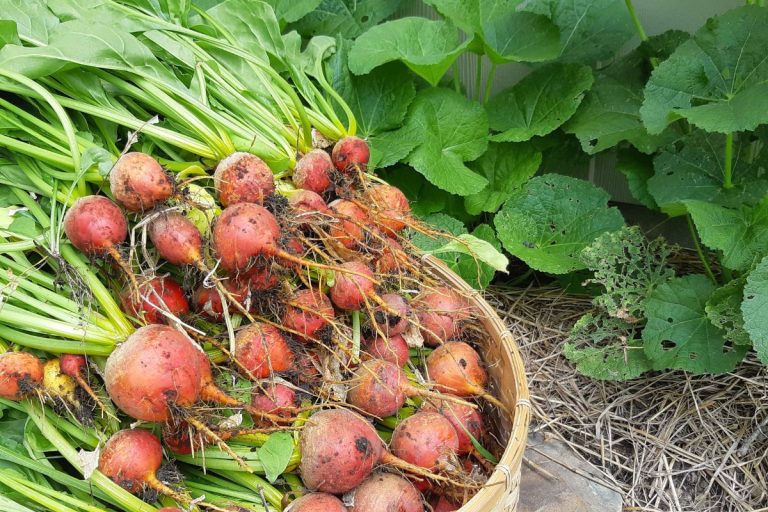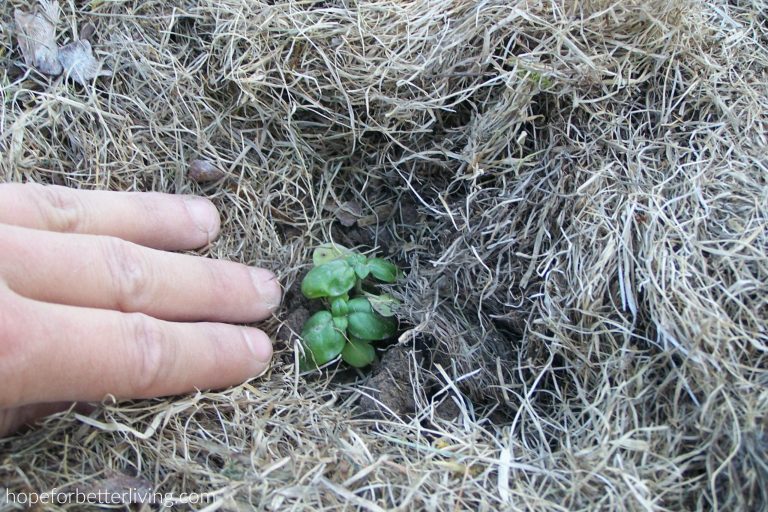Easy Way to Plant and Grow Carrots from Seed
Discover the best way to plant carrot seeds, so you can have a steady supply of fresh carrots from your own garden with very little effort.
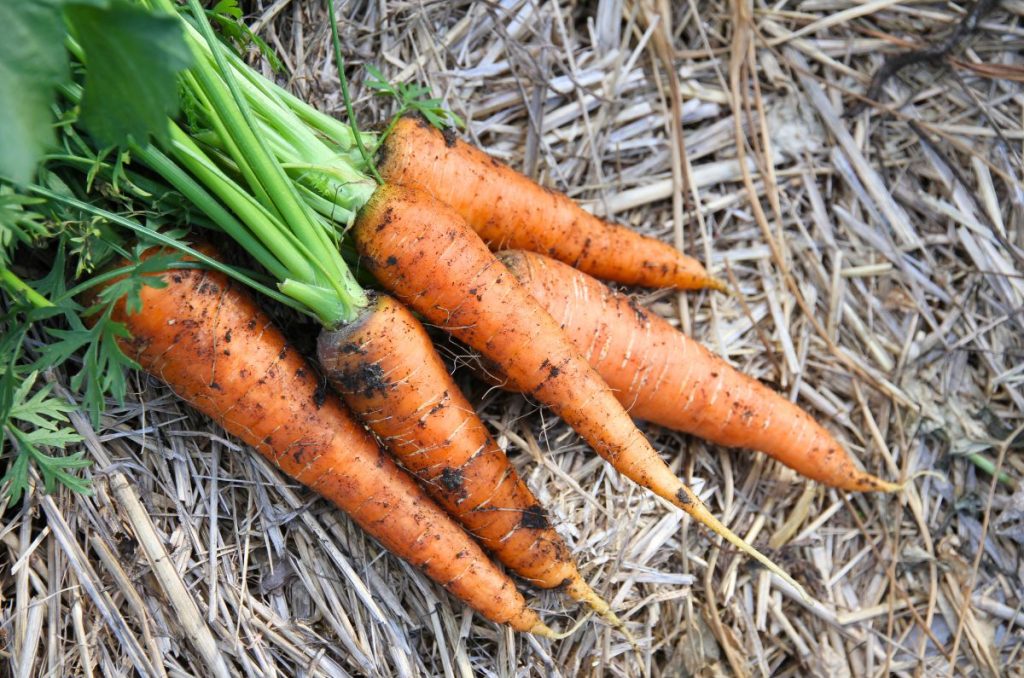
When I started gardening as an adult, I had very limited energy due to my ongoing battle with Lyme disease. I knew home grown food was good for my health. But I also knew that gardening took planning, effort and energy.
Gardening is simple...but it isn't easy!
Instead of giving up or growing less, I searched for ways to cut back on the work load that comes with growing my own vegetables.
And while you never can get rid of the work entirely, I have found some shortcuts that help me grow hundreds of pounds of carrots every year, in spite of my limitations.
In my gardens, root crops are one of the most difficult things I grow.
I have a special love-hate relationship with carrots.
In spite of the fact that carrots can be painfully tedious to grow, I love them. Take a bite from a grocery store carrot, then another from a homegrown carrot. The sweet, flavourful carrot from your own garden wins every time!
But I hate planting and caring for them.
Carrot seeds are tiny and as a result, I always sow them too thickly in my garden. When they germinate, carrot plants always need to be thinned 1-2x, so the roots have room to grow and expand. And then there's allll the weeding you have to do around all the little plants while you wait for them to grow into big carrots!
I love them. I hate them. And I just can't give up on carrots.
So instead, I've found a few ways to eliminate some of the work load that comes with homegrown carrots. This simple technique will save on time and effort. It's the only way I grow these orange root vegetables now!
Here's the easy way to plant and grow carrots from seed.
Choose the Best Types of Carrot for Your Garden Soil
To grow great carrots, you need to choose varieties that will do well in your garden soil. Yes, some varieties of carrots are better suited to particular soil types! I walk you through it all below.
Best Carrot Varieties for Clay Soil
If you have clay soil, you'll want to grow shorter, thicker carrot varieties.
Stubbier carrots are more likely to form well in clay soil (they put their energy into grow outwards instead of downward), whereas longer types may have split ends if they meet too much resistance from the soil.
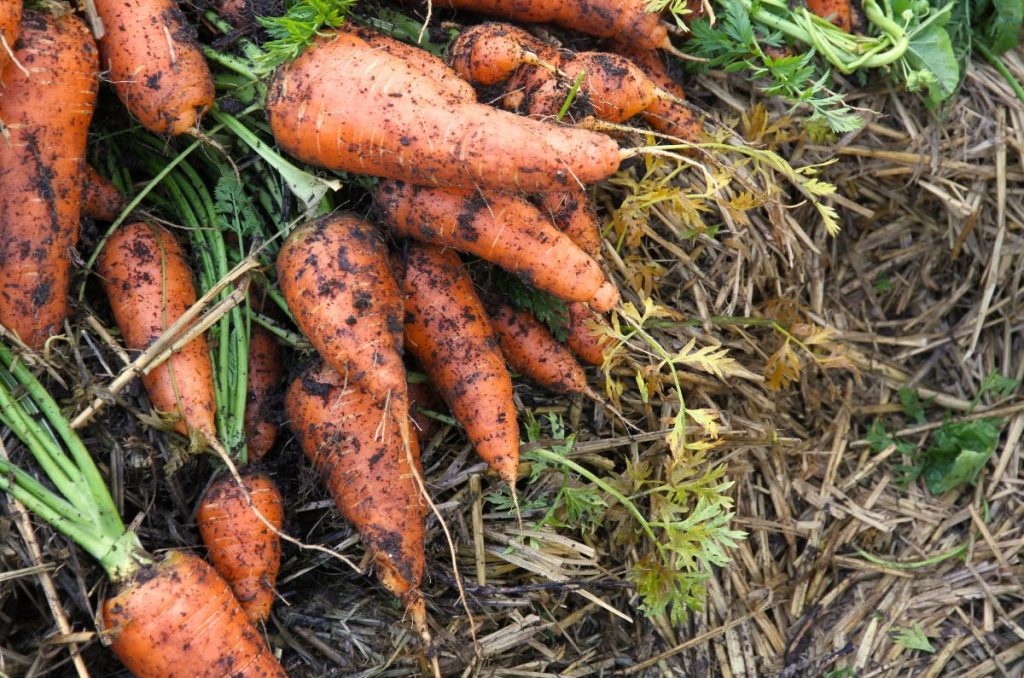
Here are some varieties you can try if you have this issue.
- Atlas (also Paris Market Carrot and other round root types)
- Chantenay
- Danvers
- Kuroda
- Scarlet Horn
Carrot Varieties for Loamy Soil
If you have loose, loamy soil, you can grow any type of carrot you'd like! But you specifically have the option of growing carrots that are long and slender. These will do well in loamy soil, because it's easy for the tap root to penetrate the dirt and descend downward.
Here's some carrot varieties that have a longer tap root and need that loamy soil to grow to their full potential.
- Dragon
- Imperator
- Mokum
- Nantes
- Yellow Stone
Types of Carrots for Stony Soil
You can grow carrots in stony soil, but you may not get slender, tapering roots you're accustomed to. Instead, carrots may split at the end and you'll have 3-4 roots on one carrot top.
If you have issues with rocks in your garden, I'd recommend growing the above varieties that are shorter and do well in clay.
Easy Way to Grow Carrots from Seeds
Step 1: Prepare to Plant While Soil Temperatures are Cool
Carrot seeds won't germinate well if you don't plant at the proper time. They like cool soil and need good moisture to properly sprout. Carrot seeds can be tricky to start, because they're tiny and only receive light covering of soil after being planted.
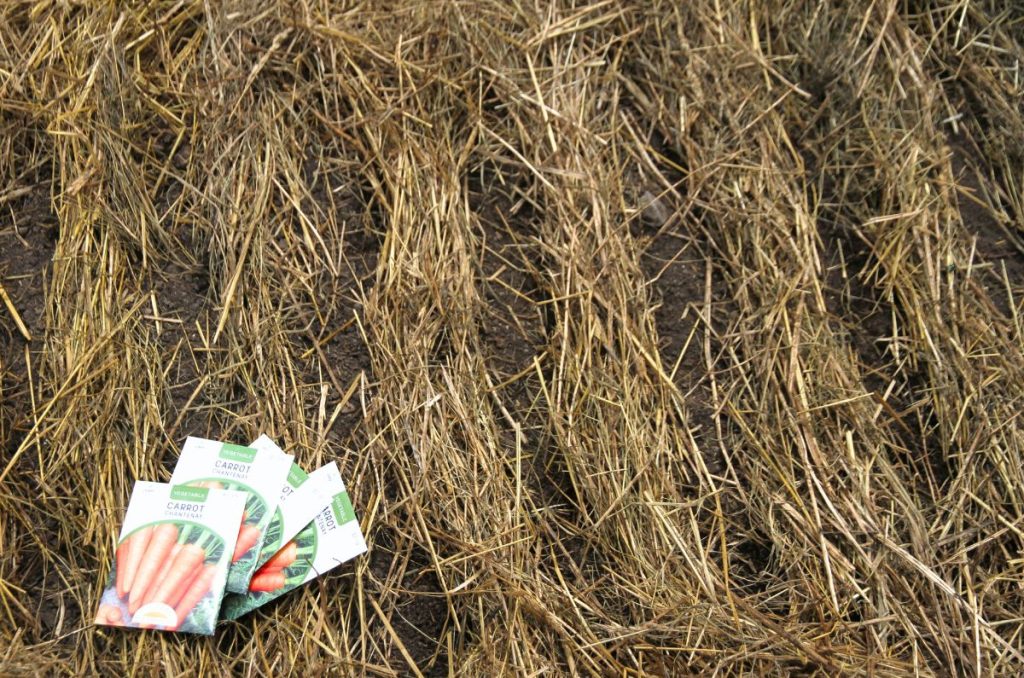
As a result, it can be difficult to keep seedlings moist if the days are hot. Carrots should be sowed in early spring, when you start other cool weather crops.
Around here, I like to sow carrots about 2-3 weeks before my last average frost date, and I usually get an excellent seed germination rate!
Step 2: Prepare Wide Garden Beds for Carrots
When growing carrots in the vegetable garden, plant in wide beds. Wide beds minimize weeding and help you maximize garden space.
You don't have to construct actual raised garden beds. Just use a shovel or hoe to pile dirt into free standing beds that are 6-8 inches high and about 24 inches wide. These beds can be a few feet long, or run the entire length of your garden. Carrots will love the loose soil!
Tip: Already have wide garden beds that sat over the winter? Go ahead and loosen the soil with a garden fork or pitch fork before planting, especially if you have heavy soil. Carrots will thank you for it!
Step 3: Cover the Garden Bed with Mulch
If you want to cut back on the work that comes with growing carrots, mulch your garden bed before planting it.
Mulch not only suppresses weeds, but the organic matter will break down and add extra nutrients to your soil. It will also help hold moisture in (which root vegetables love if you have fast draining soil, like I do).
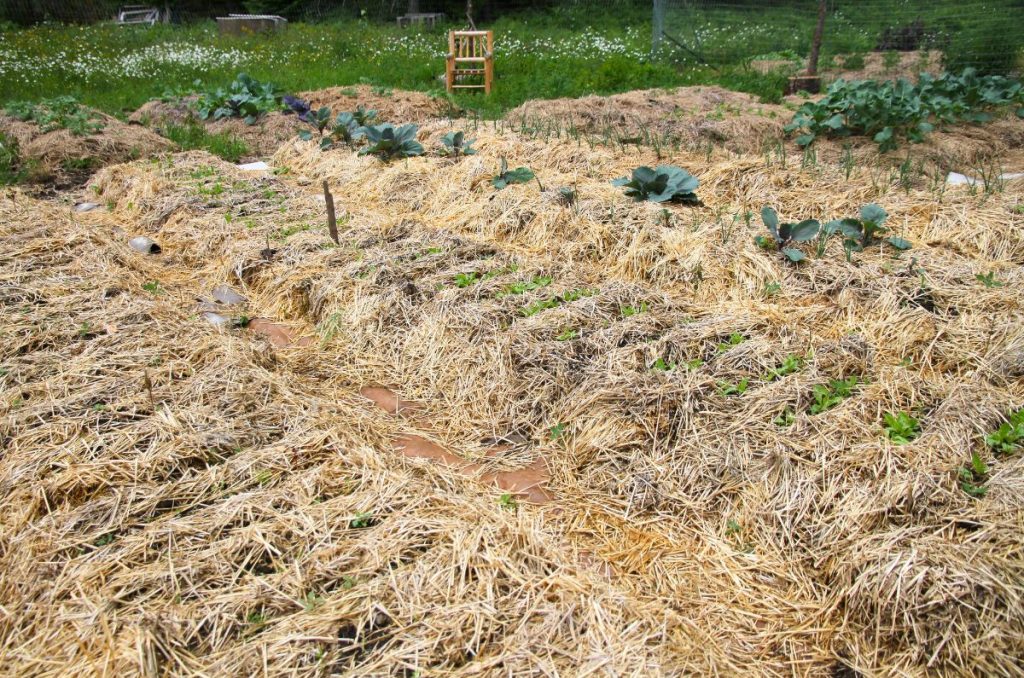
In my gardens, I like to use old rotten hay, straw or even dried out lawn clippings (I teach you how to use your own lawn clippings here). When you're using hay or straw, make bales are well rotted and that the seeds have all sprouted and died. I leave my bales out in the rain, sun and snow for a year before using them in the garden.
Haul the mulch to your garden bed and cover the soil surface with an even layer. If you're using hay or straw, be sure to shake the flakes so they break up and are easy to part and plant in. Shake your mulch over the bed until it's about 1 inch thick.
Helpful tip: watering your mulch before planting will help it settle, so it's not so fluffy and easier to work with.
Step 4: Part the Mulch into Evenly Spaced Rows
Before planting seeds, you need to make rows across the width of your garden bed (not the length of it). Use both hands to part the mulch, until you're down to bare earth.
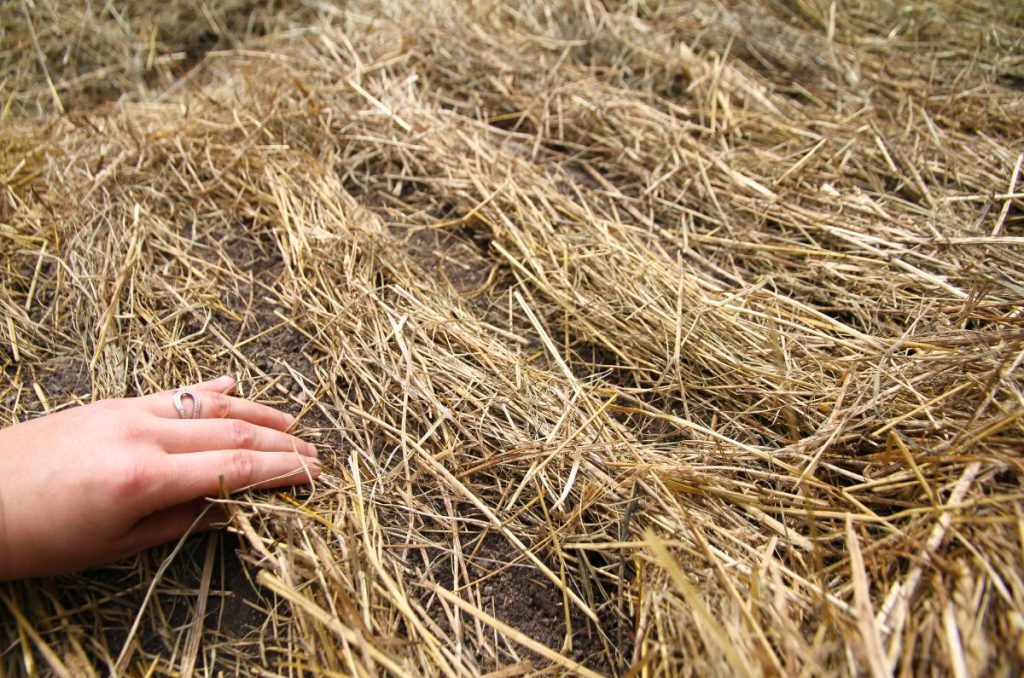
Space the rows as needed for your carrot variety. If you don't know what this is, check on the back of your seed packet for specifics.
Make rows across the width of your entire garden bed before planting.
Step 5: Sow Carrot Seed in Rows on Bare Earth
You don't need to worry about digging a trench for each row of carrots! Just open your packet, dump carrot seeds into your hand and pinch some between your pointer finger and thumb.
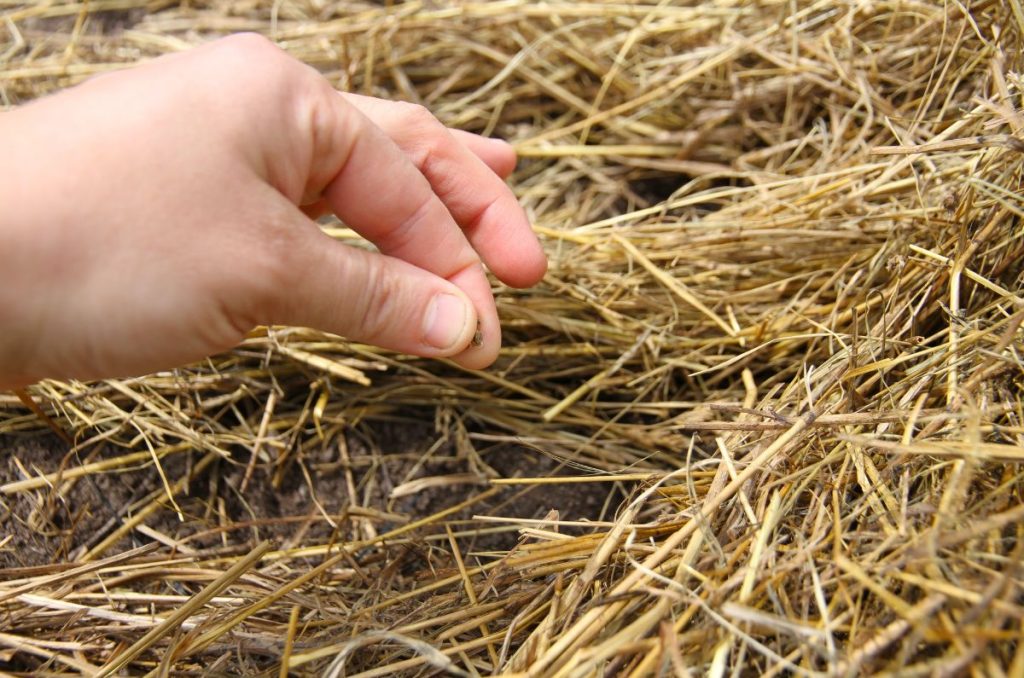
Lightly sprinkle and sow seed on the exposed rows of earth, until you've completed the entire garden bed.
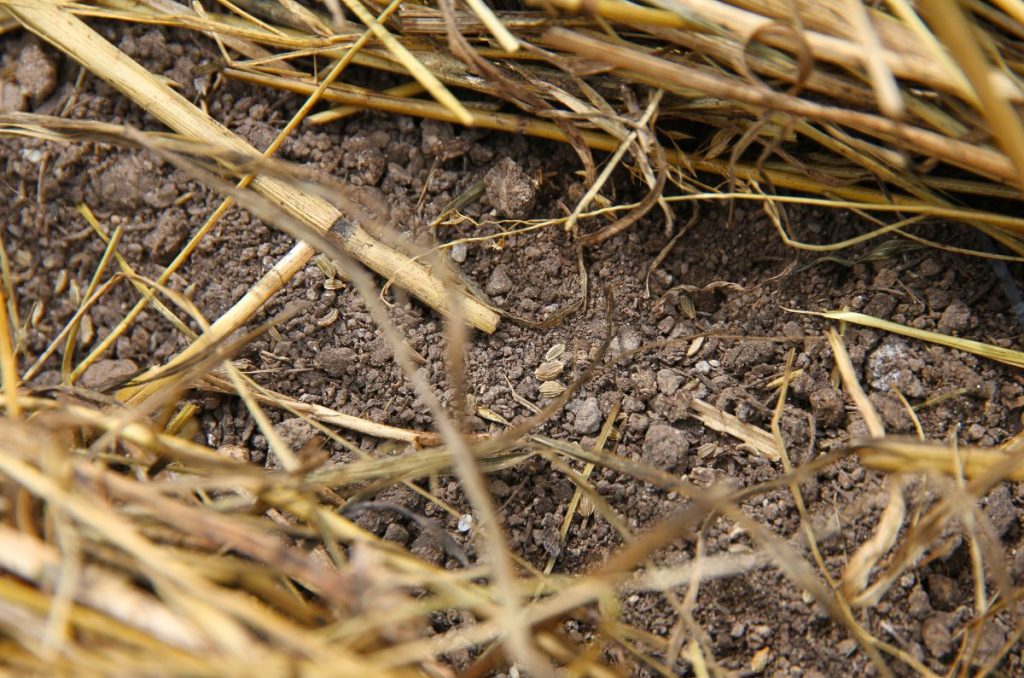
Step 6: Lightly Cover Carrot Seeds with Soil
Instead of burying seeds in a trench, go ahead and sprinkle soil on top of the seeds that are lying on bare earth.
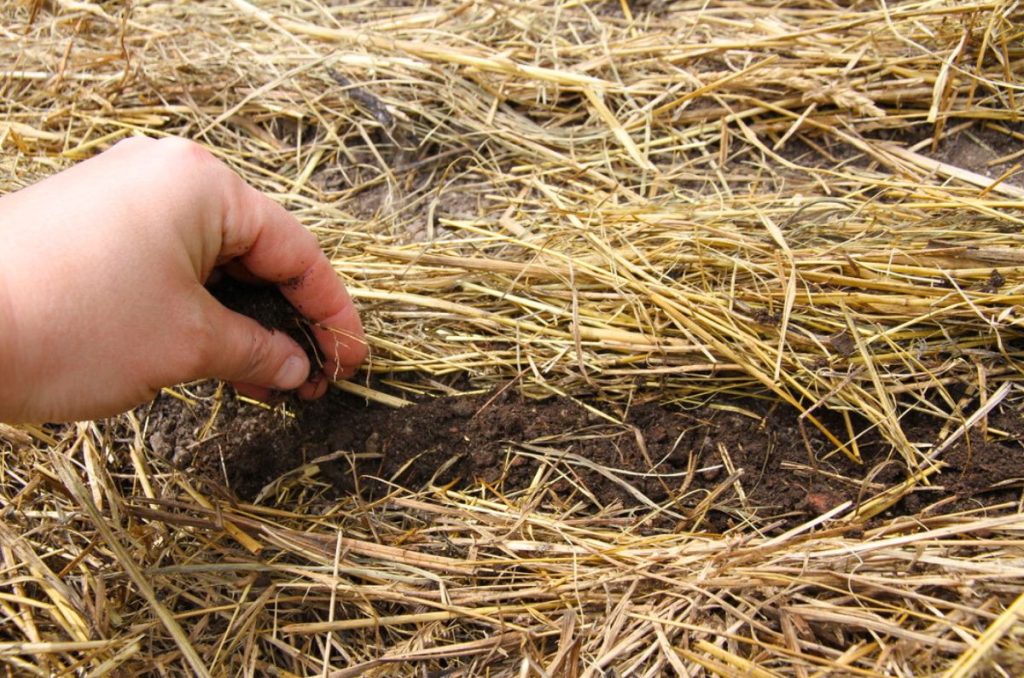
I like to scoop up moist soil into a bucket and break up any clumps. Then I can carry the bucket with me as I lightly sprinkle this soil over every row.
Carrots seeds need to be covered with approximately 1/4 inch of dirt.
Step 7: Keep Soil Moist to Help with Germination & Growing
Carrots need soil moisture to germinate. So if you don't expect to have rain a day or two after planting, be sure to use a sprinkler to keep the soil moist for 7-10 days.
I can't stress this enough. If your carrot seeds don't sprout, it's likely because you didn't keep the soil moist enough. Remember: they only have a very light covering of soil and are susceptible to drying out!
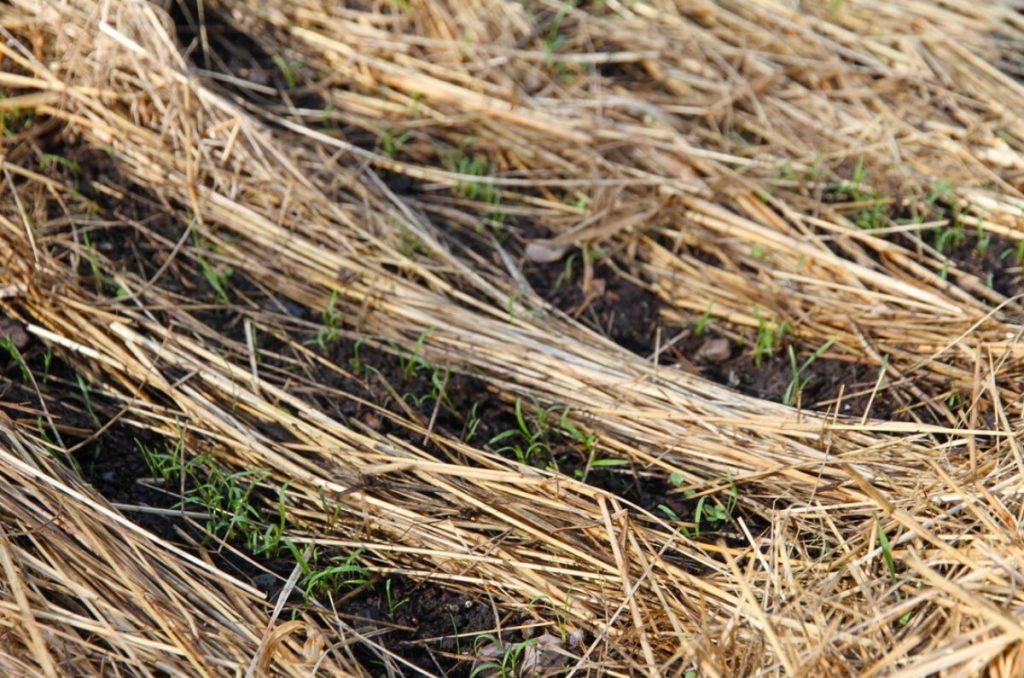
This root vegetable does need continuous watering after seedlings have germinated, but the soil doesn't have to remain moist at all times.
Step 8: Thin Carrots When Seedlings Are Several Inches Tall
Carrots are slow growing. Which is why I like to use mulch to suppress the weeds!
I don't really weed carrot beds in my garden, because my mulch does all the work. But like all other root vegetables, carrots do need to be thinned, so their tap roots have room to grow and mature.
It's best to do this when carrot tops are 4-5 inches tall.
Helpful tip: thin seedlings just after you've watered the garden (especially if you have heavy soil). The tiny roots will be easy to pull up and you won't have to fight them.
Need help identifying carrot seedlings? I give you photo identification for common vegetables types here.
Ideally, carrot seedlings would be thinned so individual plants are 2 inches apart. That being said, I never manage to perfectly thin my carrots the first time!
I often end up doing a second thinning when orange carrot roots are the size of my thumb.
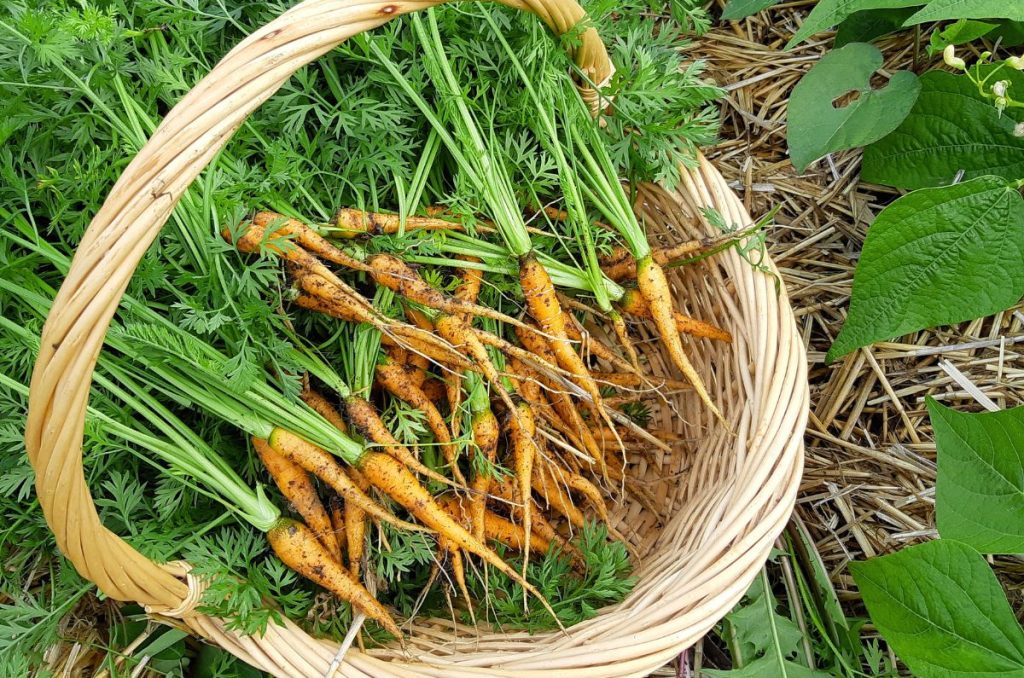
These baby carrots are actually quite tasty and can be eaten fresh. You can also ferment them, or turn them into pickled carrots.
Step 9: Let Carrots Grow Until They Reach Full Size
Orange roots can be pulled and used when the top of the carrot is the size of your thumb or bigger. Just ignore the green tops; they're really not an indicator of carrot root size!
Also know that carrot sizes will vary based on the variety. Take note of your particular type and start harvesting when they reach the recommended size.
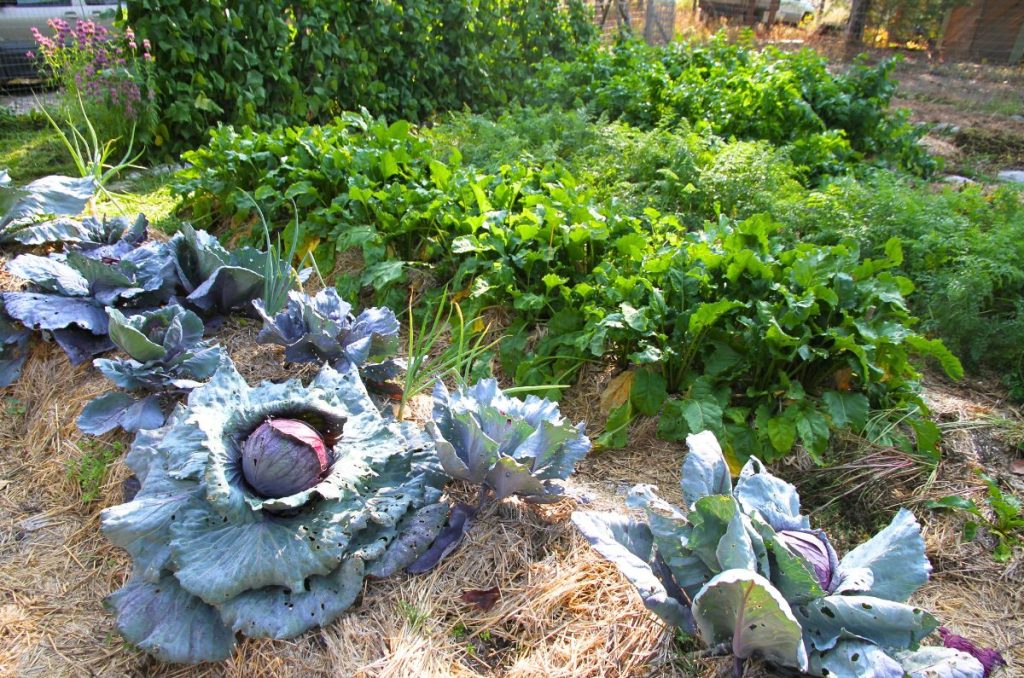
Step 10: How to Harvest Carrots
Your carrots can be harvested and used throughout late summer-late fall.
Carrots with shallow roots can often be pulled out of the earth by their green tops. But carrots with deeper tap roots will probably snap off in the earth.
In this case, go ahead and loosen the dirt with a pitch fork, shovel or garden fork. You should be able to pull each orange root from the soil without any damage.

How to Store Carrots for Winter
There are several ways you can preserve homegrown carrots.
If you live in a very hot climate, you can freeze or pressure can carrots.
Have mild winter temperatures that are cold, but don't dip below freezing? Leave carrots in the garden and harvest as needed!
Or, if you only occasionally have freezing temperatures, you can cover the carrots with a layer of fresh, clean straw or even leaves. Cover the row with a tarp and weigh it down with rocks. Dig as needed.
But if you have really cold weather throughout the winter months, I'd recommend putting carrots into cold storage (like we do). I teach you how to store carrots in a cold room here.
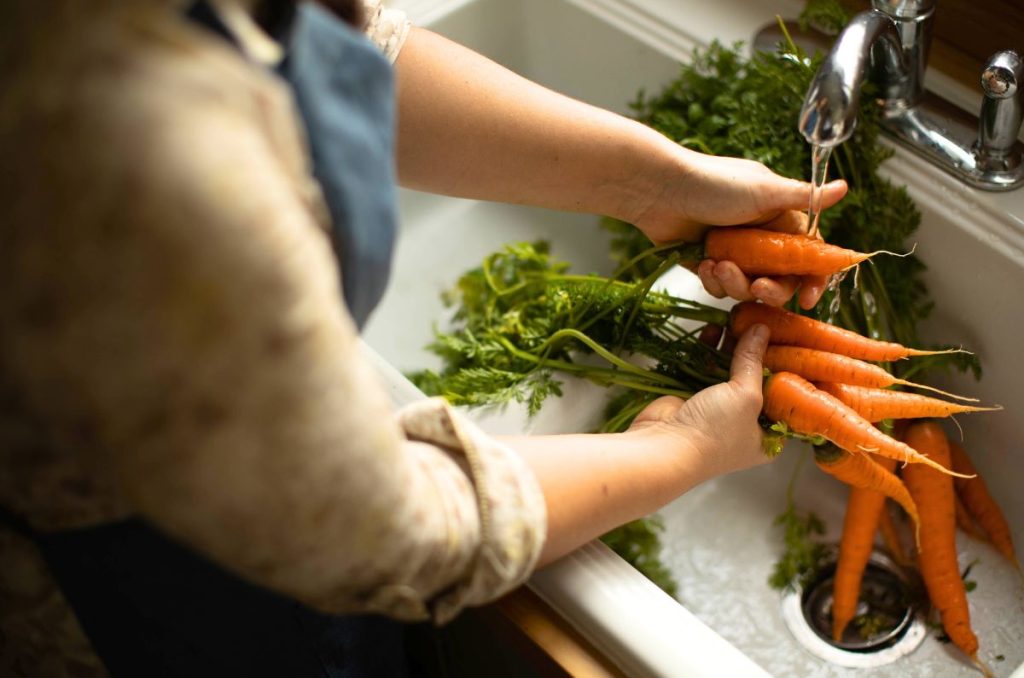
When it's all said and done, growing vegetables always takes work on your part. But I love using this method because even though it takes work on the front end, you won't have the extra work of weeding regularly throughout the summer.
And that makes it all worthwhile!
